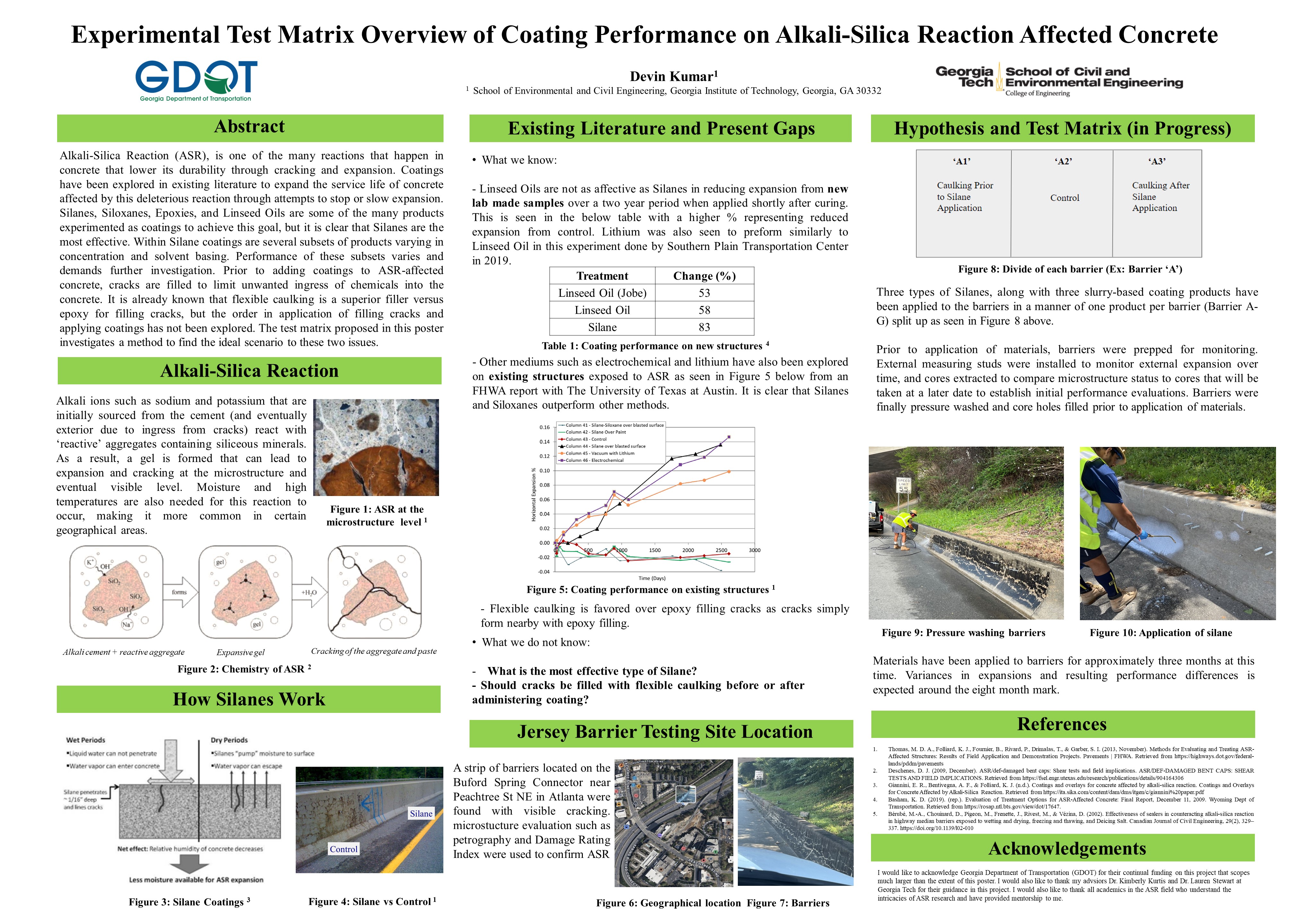EXPERIMENTAL TEST MATRIX OVERVIEW OF COATING PERFORMANCE ON ALKALI-SILICA REACTION AFFECTED CONCRETE
PI: Kimberly Kurtis
Co-PI(s): Lauren Stewart
Institution(s): Georgia Institute of Technology
Abstract
Alkali-Silica Reaction (ASR), is one of the many reactions that happen in concrete that lower its durability through cracking and expansion. Coatings have been explored in existing literature to expand the service life of concrete affected by this deleterious reaction through attempts to stop or slow expansion. Silanes, Siloxanes, Epoxies, and Linseed Oils are some of the many products experimented as coatings to achieve this goal, but it is clear that Silanes are the most effective. Within Silane coatings are several subsets of products varying in concentration and solvent basing. Performance of these subsets varies and demands further investigation. Prior to adding coatings to ASR-affected concrete, cracks are filled to limit unwanted ingress of chemicals into the concrete. It is already known that flexible caulking is a superior filler versus epoxy for filling cracks, but the order in application of filling cracks and applying coatings has not been explored. The test matrix proposed in this poster investigates a method to find the ideal scenario to these two issues.

Please comment below with any statements or questions you may have. Also let GTI if you would be interested webinars or presentations on similar topics.

